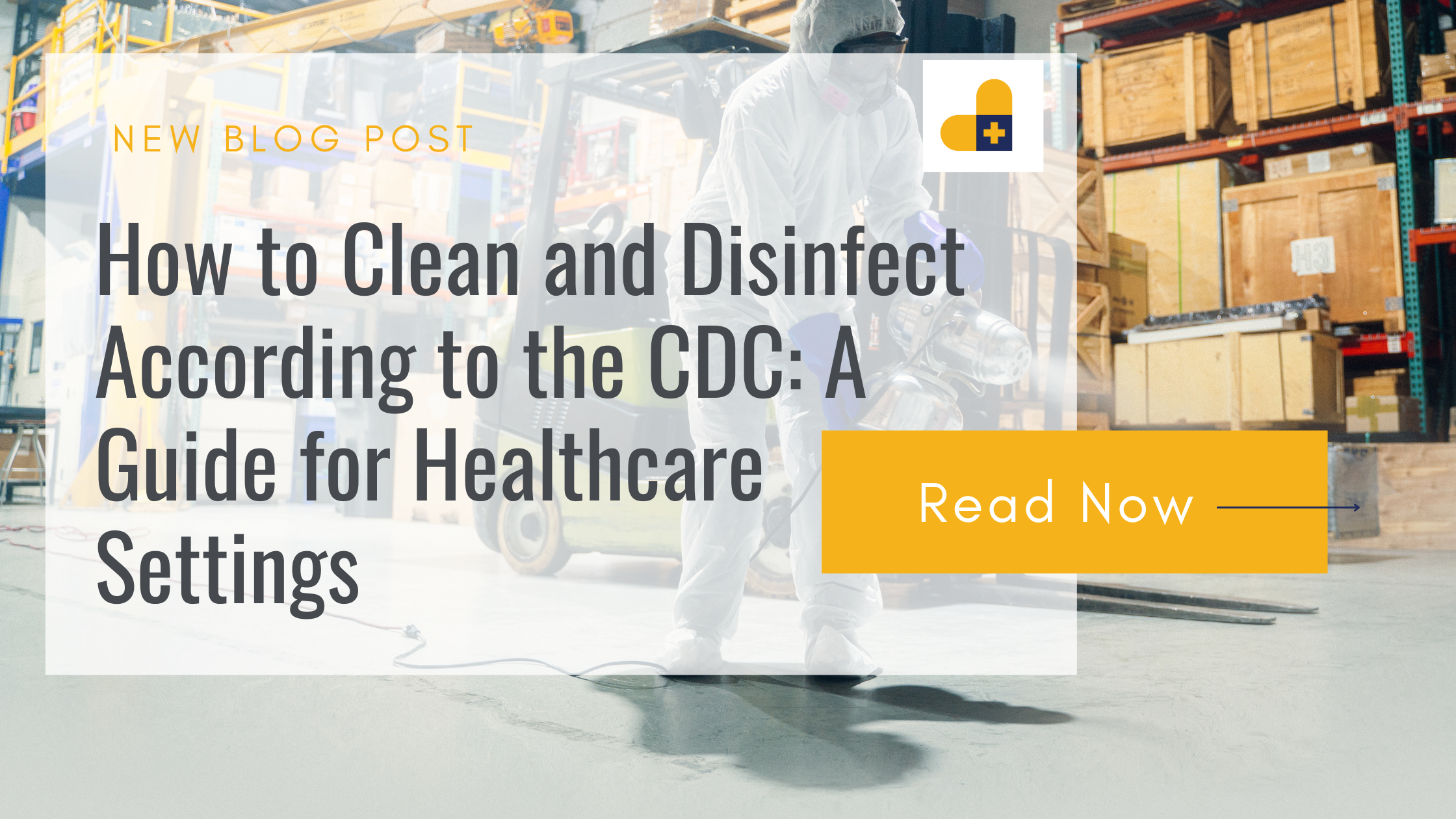In the ongoing battle against infectious diseases, proper cleaning and disinfection in healthcare settings is essential to protect both patients and staff. The Centers for Disease Control and Prevention (CDC) provides detailed guidelines on how to clean and disinfect surfaces effectively, helping reduce the spread of harmful germs, bacteria, and viruses.
At Vigour Med Store, we understand the importance of maintaining a clean and safe environment, especially in clinics, hospitals, and other healthcare facilities. In this blog, we'll walk you through the CDC's recommended procedures for cleaning and disinfecting, ensuring that your healthcare facility meets the highest standards of hygiene.
1. The Difference Between Cleaning and Disinfecting
Before diving into the cleaning process, it's essential to understand the difference between cleaning and disinfecting:
-
Cleaning: The process of removing dirt, dust, and debris from surfaces. This may not necessarily kill germs but helps to reduce their numbers.
-
Disinfecting: The use of chemicals to kill germs and bacteria on surfaces after cleaning. This process is vital for preventing the spread of infectious diseases.
2. Follow the CDC's Step-by-Step Process for Cleaning and Disinfecting
The CDC recommends the following steps to ensure thorough cleaning and disinfection:
Step 1: Clean the Surface
- Use soap or detergent and water to clean visible dirt, dust, or grime.
- Scrub all surfaces with a clean cloth or disposable wipes.
- Pay attention to high-touch areas like door handles, light switches, bed rails, and medical equipment.
Step 2: Disinfect the Surface
- After cleaning, apply an EPA-approved disinfectant to the surface.
- Ensure that the disinfectant you use is appropriate for the type of surface being cleaned and is effective against the germs you are trying to eliminate.
- Follow the manufacturer’s instructions on how long the disinfectant should remain on the surface for maximum effectiveness.
Step 3: Allow Surfaces to Air Dry
- Once the disinfectant has been applied, allow it to air dry. This step is crucial for ensuring that the disinfectant works as intended.
- Avoid wiping the surface after applying the disinfectant, as it may reduce its effectiveness.
3. High-Touch Areas to Prioritize in Healthcare Settings
Certain areas in healthcare facilities are more susceptible to contamination due to frequent contact. These high-touch areas should be cleaned and disinfected more frequently. Some of these include:
- Patient rooms: Bed rails, medical equipment, chairs, and tables.
- Restrooms: Toilet handles, faucets, and countertops.
- Waiting rooms: Chairs, magazines, door handles, and light switches.
- Healthcare equipment: Devices such as thermometers, stethoscopes, blood pressure cuffs, and patient monitoring systems.
By consistently targeting these high-risk zones, you can ensure a cleaner, safer healthcare environment.
4. Best Practices for Disinfecting Medical Equipment
Medical equipment plays a critical role in patient care, and it must be disinfected according to the manufacturer’s instructions. The CDC recommends these best practices:
- Use proper disinfecting solutions: Always use the appropriate disinfectant for medical equipment, following the instructions on how to apply and allow it to work.
- Disinfect between patients: Always clean and disinfect equipment between patient uses to prevent cross-contamination.
- Proper handling of reusable equipment: Ensure that any reusable medical tools are properly disinfected and sterilized according to CDC guidelines before being used on another patient.
5. Personal Protective Equipment (PPE) for Cleaning and Disinfecting
When cleaning and disinfecting, it's essential to wear the right personal protective equipment (PPE) to ensure your safety:
- Gloves: Always wear disposable gloves when cleaning or disinfecting surfaces, especially in high-risk areas.
- Masks: Depending on the type of environment, wear a surgical mask or respirator for protection.
- Goggles or face shields: To prevent accidental exposure from splashes or airborne droplets.
- Gowns or aprons: To protect clothing from contaminants.
6. Common Mistakes to Avoid When Cleaning and Disinfecting
To maximize the effectiveness of cleaning and disinfecting, avoid the following common mistakes:
- Using the wrong disinfectant: Ensure that you are using an EPA-approved disinfectant appropriate for the surfaces you are cleaning.
- Not following dwell time: Always adhere to the recommended dwell time to allow the disinfectant to properly eliminate germs.
- Mixing cleaning products: Never mix different cleaning products (e.g., bleach and ammonia), as this can produce harmful fumes.
- Neglecting high-touch areas: Failing to clean high-touch surfaces regularly can increase the risk of disease transmission.
Conclusion
Following the CDC's guidelines for cleaning and disinfecting is critical to creating a safe, hygienic environment in healthcare facilities. At Vigour Med Store, we are committed to providing high-quality medical supplies that support healthcare workers in their daily efforts to protect patients and themselves from harmful infections.
By adhering to these cleaning protocols, you can help reduce the risk of infection and maintain a safer healthcare environment for everyone.
Stay safe, stay healthy, and continue to prioritize cleanliness and infection control in your facility.
Explore PPEs in the PPE category of Vigour Med Store





